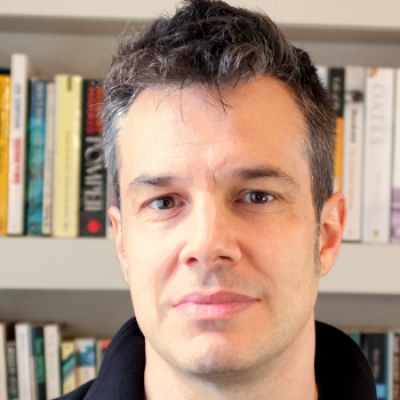When we start therapy for the first time, most of us have in mind something we want to change. Often it's an issue we've struggled with for a long time. Somehow we're pulled back to repeating the same pattern despite our best efforts. And while it is usually easy to identify the thing we want to change, focusing on it can blind us to the rest of the picture. It can make it hard for us to see the bits that we don't want to change. And these hold the key.
Consider the case of David not his real name . David came to therapy feeling suffocated by his relationships and by the demands he felt from the world. When we talked, I saw a man spinning plates. He worried that if he stopped attending to any element of his life that everything would collapse. He struggled to say no and felt guilty about taking any time for himself. He felt that all his energies must be devoted to serving his partner, his mother, and his job. Life felt heavy, and catastrophe never far away. Unsurprisingly he was exhausted, strung out, and depressed. He had been focusing on his problems for so long that he struggled to imagine there could be an alternative way of thinking about them.
Reframing the problem as a dilemma
A dilemma is a choice between two things we don't want - inevitably we choose whichever is least painful. When someone in therapy asks me, "how do I change X?" I tend to respond: "what will it cost you?" For as unpleasant as the symptom might be, there is usually something about the alternative that we are avoiding. In David's case, we could easily identify one half of his dilemma - that he felt suffocated. We needed to work together to uncover the cost of the alternative.
"What will it cost you to have more air?" David was taken aback when I asked him this question, and initially struggled to answer. Over the weeks that followed, this was a question we returned to and gradually, ideas started to emerge. It became clear that David was terrified of being abandoned. He could not conceive of anything that sustained his relationships beyond the service that he provided. He slowly came to the realisation that he did not believe himself to be loveable.
His relationships felt unbearably precarious. Faced with such intense anxiety, his solution was to make himself indispensable. The suffocation he experienced was a direct result of doing this so successfully. What kept him trapped was a strategy he was not even aware he was using. In order to get unstuck, we needed to understand why he got stuck in the first place.
Why we get stuck
Life is hard, painful, and requires us to come up with solutions to make it less so. Most of these solutions date from early experiences with those who raise us. We learn to navigate the world in which we find ourselves with the least amount of discomfort. From time to time these solutions cause us problems. There are consequences.
Human life can be viewed as a series of attempts to solve the problem of living, and all solutions have side effects. When these side effects become unbearable, we call this poor mental health. Usually the solution itself hasn't changed - the environment has - and the old solution has either stopped being effective, or the side effects have become too severe.
We go through life reusing the same old solutions, often without even noticing we are doing so; not seeing the choices we are regularly making. These patterns are so stable, and have been around so long, that they can become practically invisible - what we call unconscious. And it is the very choices that we don't see that keep us trapped. In the words of Carl Jung: "Until you make the unconscious conscious, it will direct your life and you will call it fate."
In David's case, the unconscious strategy he was using was intended to avoid the anxiety of abandonment. In order for him to be able to choose a different path, we needed to draw an emotional roadmap that included the large obstacle he was steering around.
The route to change
Only when we are able to notice the choices that underpin our problems can we choose something different. And when we pull these unconscious choices into the light and examine them, usually we find that they are rooted in our attempts to mitigate conditions that no longer exist. We can begin to question the necessity of the strategy and the beliefs that underpin it.
With time David came to realise that his fear was rooted in the disintegration of his family in childhood. Through the support of therapy, he was gradually able to see that his strategy assumed he was ten years old and utterly dependent on the family unit. He was able to test his unconscious hypothesis that the people in his life didn't love him and would leave the moment he stopped giving them what they demanded. And when he did, he was shocked to find that the world did not collapse, nor the sky fall in. But more than this, that for the first time he felt some security in his relationships.
It is an exciting time when this moment arrives in therapy, when we are able to leave our old patterns behind us. Very often, people tell me that they are surprised that in fact the anticipated catastrophe didn't occur. But more than this, that life opens up; that they can enjoy a newfound freedom in an area of life that they have struggled with - they often just wish they'd found therapy sooner.

